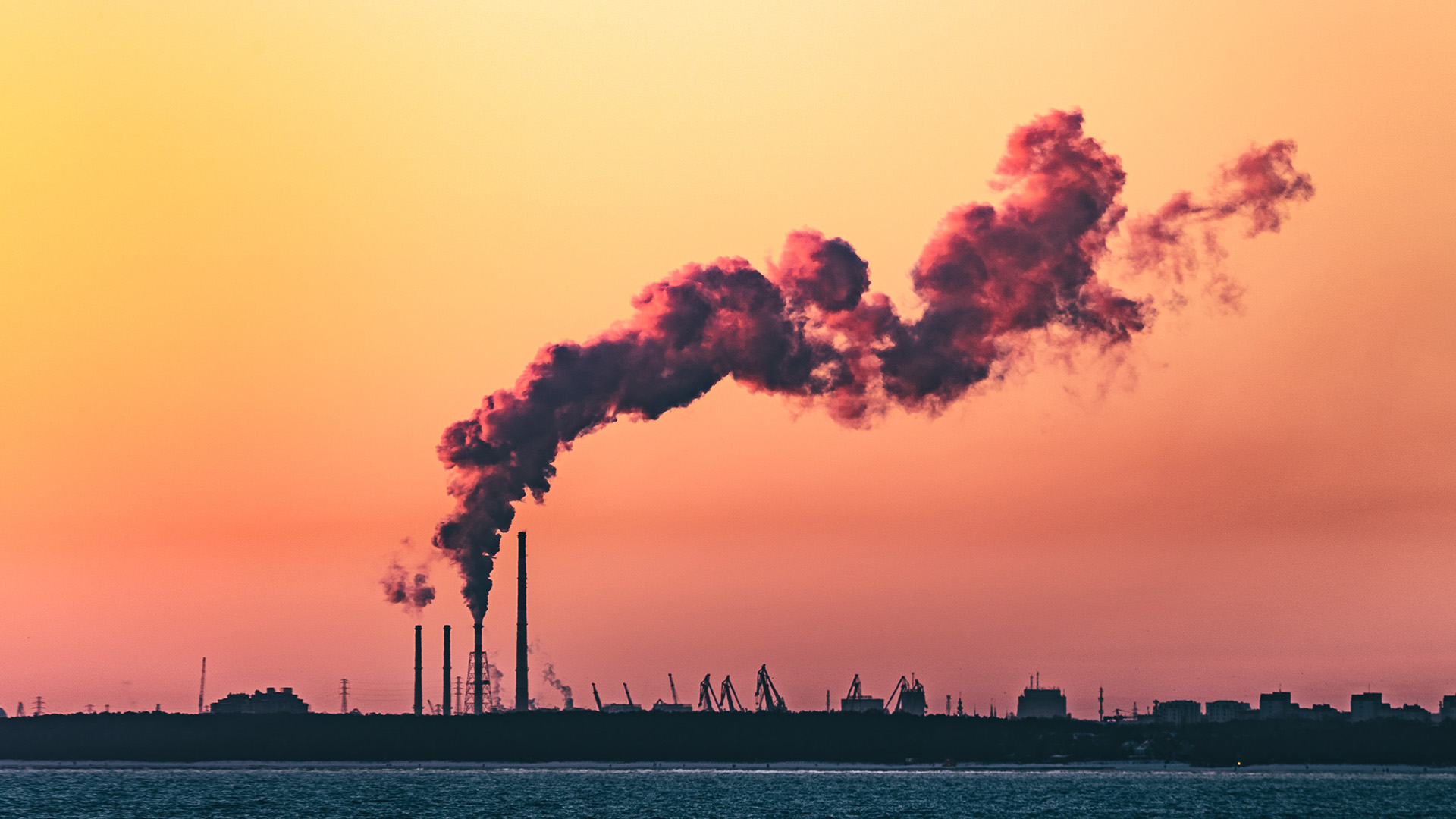We are honoured to introduce Prof. Noel Aquilina to the Green Deal platform! In his article, Noel Aquilina provides an overview of the local outdoor air quality through an analysis of the trends of monitored pollutants (particulate matter, nitrogen dioxide and ozone) in six districts in the Maltese Islands. Reference is made to a recent, published scientific study, which evaluated the official data gathered by the Environmental and Resources Agency (ERA) from 2008 till 2017. Apart from providing a generic check of the local air quality, the same study provided a glimpse of the health implications due to air quality. In the Northern Harbour district, which is the smallest by size, extending from Pembroke to Ħal Qormi, and characterised by the highest residential and traffic density, as expected the highest levels of the mentioned pollutants were recorded. Consequently, the most salient finding was that the highest, annual number of deaths occur in the same district, with a mean of 106 and another 44 out of every 1000 deaths (about 15%) can be attributed to the long-term exposure to fine particulate matter and nitrogen dioxide respectively.
At times, it seems obvious to associate the quality of life with our external environment, be it the proximity to the sea or open spaces, idyllic footpaths, rubble walls, prickly pear trees and shallow vegetation; in principle, a landscape which should be typical of the Mediterranean region.
Based on the annual report on air quality in Europe, issued by the European Environment Agency in 2022, air pollution is the largest environmental health risk and significantly impacts the health of the European population, particularly in urban areas. The main key takeaway message is that while emissions of regulated air pollutants and their concentrations in ambient air have fallen significantly over the past two decades in Europe, air quality remains poor in many areas. In 2020 in the European Union, 96% of the urban population was exposed to regulated pollutant levels above the health-based guideline level set by the World Health Organization (WHO), leading to 311,000 premature deaths in the EU-27. It was also emphasised that air pollution causes morbidity, hence people live with several health impacts, increasing personal suffering, and poses a significant increase in health care costs.
The European ambient air quality legislation (Air Quality Directive (2008/50/EC) is designed on the principle that EU Member States divide their territories into several management zones and are required to assess air quality in these zones using measurement or modelling approaches. Overall, however, does an air quality monitoring programme exist in Malta? If yes, how is it set up and which standards does it follow? Who operates it?
The Environment and Resources Agency (ERA) is the agency responsible for these tasks and operates an air quality monitoring network across Malta and Gozo. ERA operates a real-time monitoring network, composed of five stations in Malta (which are: Msida, Attard, Żejtun, St. Paul’s Bay and Senglea) and one in Gozo (Għarb). Theparticulate matter (PM2.5 and/or PM10), oxides of nitrogen (NOx) and ozone (O3) at 15-minute intervals to provide information on the pollution variability at the six stations representative of specific environments, at an hourly/daily resolution. The stations in Msida and St.Paul’s Bay are representative of an urban traffic environment, Attard of an urban conglomerate, Żejtun of an urban background nature and Għarb is rural background. The station in Senglea, representative of an industrial environment, has been operational for the last two years. Previously monitoring was carried out at Kordin, but this site has been discontinued after 2016. A second monitoring network operated by ERA consists of the deployment of about 12 passive tubes in Gozo and about 88 tubes in Malta every four weeks to report the annual, spatial average NO2 and benzene levels across the Islands.
What are the air quality metrics? Is air quality good or bad? How does Malta fare in comparison to the EU-27 when it comes to air quality and health effects? The European Air Quality Directive outlines limit or target values for the above mentioned regulated pollutants either on a daily or an annual basis.
To date, only one scientific study has been published which analysed the long-term trends of three regulated pollutants measured in the Maltese Islands (by ERA) and reported the first health impact assessment due to the long-term exposure to them (Fenech & Aquilina, 2020[1]). It gives a snapshot of the state of the country’s air quality and its implications on the annual mortality due to the long-term exposure to some pollutants, based on official data from ERA from 2008-2017, from each monitoring station.
For particulate matter, which is not seen by the naked eye, but has substantial health effects, if considering the overall data together, the trend of the annual mean level of both PM2.5 and PM10 is decreasing, and this observation is statistically significant and from that aspect alone that is encouraging. For NO2, the annual level is barely decreasing and in an insignificant way, whilst for O3 the increase is significant. If one views the overall annual mean level of these four pollutants in comparison to the directive limit values, for all the stations, the limit values are not exceeded.
From a legal and air quality management perspective, this means that the air quality is acceptable. In no way does this mean that there are no issues to worry about. Primarily, there are no safe levels to the exposure of PM2.5, PM10, NO2 and O3 and this is worrying in itself. Worse still, is that the composition of air typically consists of much more toxic and harmful components that we breathe continuously, which are not normally monitored. This also means the health implications due to this complexity are barely known.
The adverse health effects related to long term PM2.5, PM10, NO2 exposure are well documented (e.g. Crouse et al., 2015[2]) and the Health Impact Assessment (HIA) reported in the study by Fenech & Aquilina as based on the WHO methodology of attributing the fraction of annual mortality associated with the long term exposure to PM2.5 and NO2 for whichever district mortality data was available for the period 2010-2015.
For statistics purposes, the Maltese Islands are divided into six districts (these are: Northern, Northern Harbour, South Eastern, Southern Harbour, Western and Gozo and Comino). About half a million people inhabit an archipelago measuring 316 km2 with 93.2% of the population living in the urbanised areas. In the last 50 years, population growth and rapid urbanisation, especially in the past decade, has led to denser and quite chaotic urban centres.
The Northern Harbour district is the smallest district by size (about 7.6% of the land territory) extending from Pembroke to Ħal Qormi, comprises 13 local councils and one of the largest, Birkirkara. This district is characterised by a continuously changing urban fabric with the highest residential density (33% of the population) and part of the working population transiting in and out of it continuously. This information ties up with the expected higher concentrations of PM2.5 and NO2 measured at the Msida station, representative of this district. The salient HIA findings indicate that the highest annual number of deaths (with a mean of 106 out of 1000 deaths (10.6%)) occur in the Northern Harbour district and are attributable to the long term exposure to PM2.5.
Similarly, 44 out of the 1000 annual deaths (4.4%) in this district can be attributed to the exposure to NO2. To keep things in perspective, this district experiences a higher mortality also because it is the most populated. An interesting fact observed was that for estimates in Kordin, Żejtun and Għarb, the attributable fraction (in %) and hence the deaths due to exposure to these pollutants, was somewhat quite similar to the Northern Harbour district. In absolute numbers, the number of deaths is less, because the population density in the other districts is lower, even if they are less polluted than the Northern Harbour district.
Concluding Remarks
One of the major challenges in striking a work-life balance can be somewhat exhausting when having to deal with almost constant traffic through our road network on a daily basis. Another aspect which is directly linked to the above is that the general public is constantly longing for a better-quality surrounding environment, which should improve the overall well-being. The sources of the pollutants have not been discussed and the data shows that we have several challenges ahead in addressing changes which could truly prove beneficial. This will be a discussion for another time.
[1] Fenech, S., & Aquilina, N. J. (2020). Trends in ambient ozone, nitrogen dioxide, and particulate matter concentrations over the Maltese Islands and the corresponding health impacts. Science of the Total Environment, 700, 134527. https://doi.org/10.1016/j.scitotenv.2019.134527
[2] Crouse, D. L., Peters, P. A., Hystad, P., Brook, J. R., van Donkelaar, A., Martin, R. V., Villeneuve, P. J., Jerrett, M., Goldberg, M. S., Pope III, A., Brauer, M., Brook, R. D., Robichaud, A., Menard, R., & Burnett, R. T. (2015). Ambient PM2.5, O3, and NO2 Exposures and Associations with Mortality over 16 Years of Follow-Up in the Canadian Census Health and Environment Cohort (CanCHEC). Environmental Health Perspectives, 123(11), 1180-1186. https://doi.org/10.1289/ehp.1409276
Contributor(s)

Prof. Noel Aquilina
Professor Noel Aquilina graduated with a BSc in Chemistry and Physics in 1994 and an MSc in Physics in 2001. He read his PhD at the University of Birmingham, UK from 2004-2008 dealing with exposure to carcinogenic pollutants. He was a visiting researcher as a post-doctoral scholar at the Lawrence Berkeley National Laboratory in the Energy Technologies Area, USA working on indoor air pollutants in 2009. In 2016, he was invited by the University of California, San Francisco to carry out research on highly carcinogenic compounds in tobacco smoke and in 2022 he was an invited researcher of the School of Geography, Earth and Environmental Sciences of the University of Birmingham on pollutants conducive to lung cancer.
Noel is an Associate Professor in Atmospheric Chemistry at the Department of Chemistry within the University of Malta, a Fellow of the Royal Society of Chemistry and an Affiliate Researcher within the Thirdhand Smoke Consortium of the University of California, contributing substantially to research in exposure science.
He was involved in initial studies linking airborne, combustion related pollutants to their metabolites. His research activities cover: (1) modelling the exposure to various pollutants by applying machine learning algorithms; (2) developing analytical methods to extract a diverse suite of pollutants from different matrices and (3) carrying out measurements in indoor environments to advance the scientific knowledge of the chemical characteristics of airborne particulate matter which have a direct link to serious health effects.






